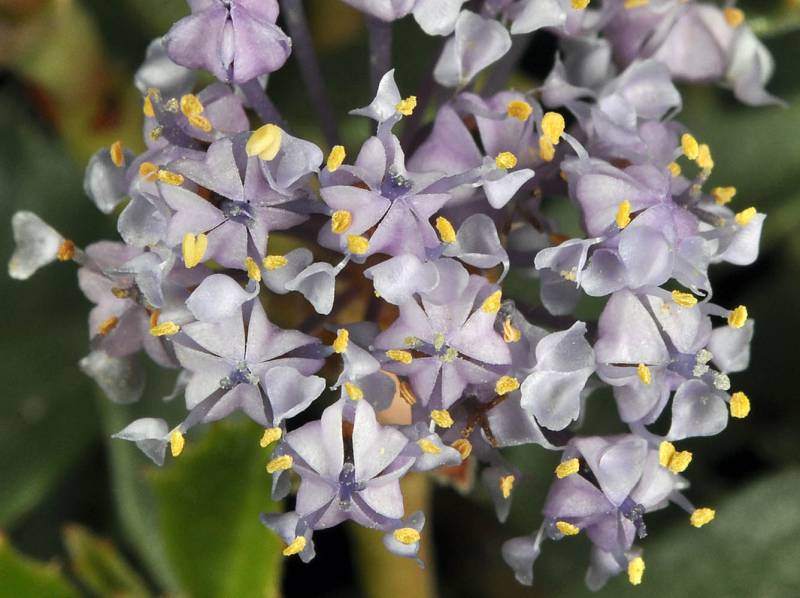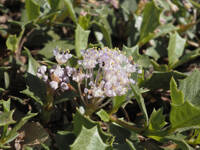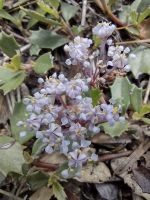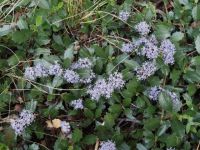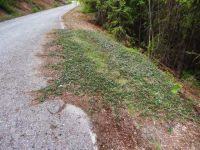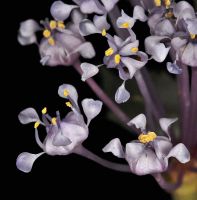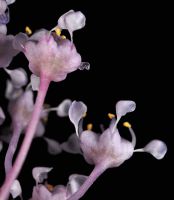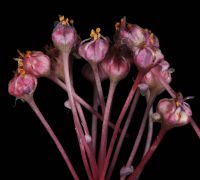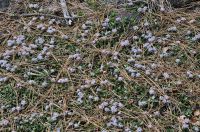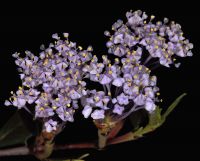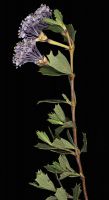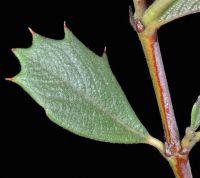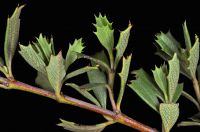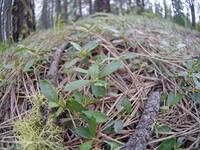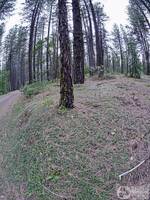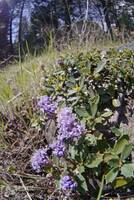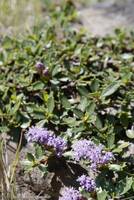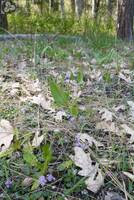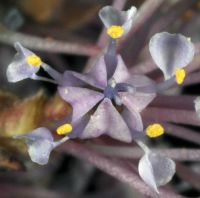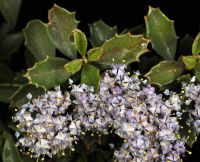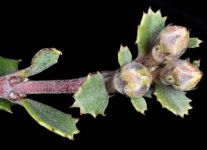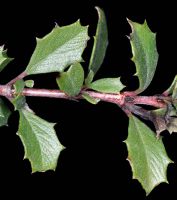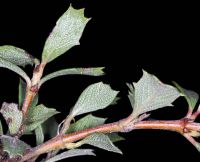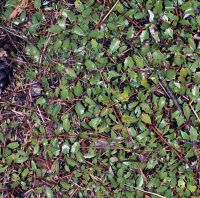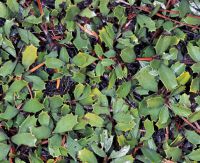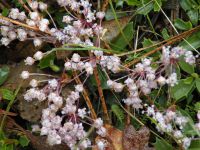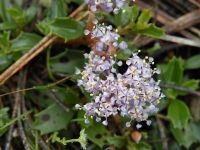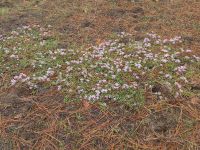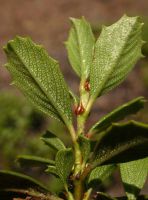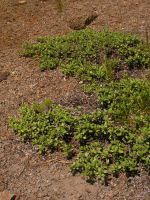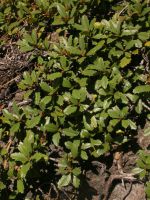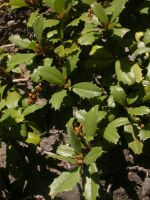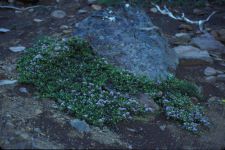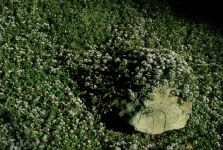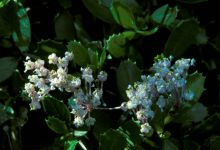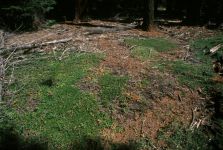Distribution: Occurring east of the Cascades crest in south-central Washington; south-central Washington to California, east to Idaho and western Nevada.
Habitat: Drier open woods, moderate to middle elevations in the mountains.
Flowers: May-July
Origin: Native
Growth Duration: Perennial
Conservation Status: Not of concern
Pollination: Bumblebees, bees, flies, beetles
Prostrate grayish-green shrub, forming mats 1-3 m. broad and 3-5 cm. tall.
Leaves opposite, persistent, thick and fleshy, oblong to obovate, 1-2.5 cm. long, 3-5 toothed above the middle, pubescent on the lower surface; stipules brownish, 2 mm. long.
Inflorescence of 10-30 flowers in tight, flat-topped clusters terminal on short lateral branches, the pedicels slender, 1.5-2.5 cm. long; calyx 5-lobed; petals 5, long-clawed, hooded, bluish to grayish-blue or nearly white; stamens 5, opposite the petals, separated from the pistil by a flat, lobed disk, which also embeds the ovary; style 1, stigmas 3.
Capsule 6-8 mm. long. separating into 3 carpels at maturity, these with divergent horns.
Publication: Pl. Hartw. 302 [1849]. 1848.
PNW Herbaria: Specimen records of Ceanothus prostratus in the Consortium of Pacific Northwest Herbaria database.
WA Flora Checklist: Ceanothus prostratus checklist entry.
OregonFlora: Ceanothus prostratus information.
E-Flora BC: Ceanothus prostratus atlas page.
CalPhotos: Ceanothus prostratus photos.
USDA Plants: Ceanothus prostratus information.

